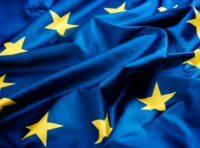European Media Freedom Act: Aufspaltung könnte Schritt in die richtige Richtung sein
Die Aufspaltung des European Media Freedom Act in eine Richtlinie und eine Verordnung, wie sie Berichten zufolge derzeit vom Ausschuss für Kultur und Bildung des Europäischen Parlaments geprüft wird, könnte ein Schritt in die richtige Richtung sein, teilen die Medienverbände BDZV, APR (Arbeitsgemeinschaft Privater Rundfunk), , MVFP (Medienverband der freien Presse) und VAUNET (Verband Privater Medien) in einer gemeinsamen auf Englisch verbreiteten Erklärung mit.
The European Treaties knowingly do not provide a competence for the regulation of media pluralism at the EU institutions all the while taking into account the diversity of linguistic and cultural areas in the member states and regions of Europe. The mainly on the commercial aspects of media focused approach of the European Media Freedom Act (EMFA) ignores this, overlooks the cultural implications, and thus threatens to negatively change well-functioning media systems adapted to the respective circumstances. In this respect, it is not only not needed, but it endangers an essential pillar of European democracies.
We welcome that the discussions on the EMFA in the European Parliament and the European Council have recognised that an EU-wide regulation might lead to unintended consequences. Splitting the European Media Freedom Act into a directive and a regulation, as reportedly currently under consideration by the CULT-Committee, could be a step into the right direction. As stipulated in our previous submissions, a careful examination of the necessity and possible impacts of the proposed provisions on the media regulations of the Member States is of the utmost importance.
In case of doubt, a minimum harmonisation by a directive is the most suitable and appropriate instrument for the media sector for regulatory aspects that ensure media pluralism. Notwithstanding, the undersigning associations emphasise the necessity of further changes to the provisions, as outlined in their respective positions.
The EMFA contains provisions that clearly focus on establishing, preserving, and securing media pluralism in Europe. Audio and audiovisual media services and press, following the diversity of the linguistic and cultural areas in the Member States and regions of Europe, are mainly national, regional, or even local services. Against this background, regardless of the question of the correct legal basis, the Member State level is the legally correct and only suitable level to set out rules for safeguarding media pluralism.
Therefore, at the very least the following provisions of the EMFA should be moved to a directive and further revised to give leeway to the Member States while implementing them in a way that fits best for their relevant media markets – if there is no sufficient national regulatory regime on those topics already.
While acknowledging the competence at Member State level and therefore moving articles into a directive, this must as well lead to the deletion of Art. 20 EMFA, which in the end narrows down the room for manoeuvre of the Member States by introducing a supervision of the usage of their competences.
The following articles of the European Media Freedom Act are suggested to be moved to a directive. Given the actual status of the debate, this list is not conclusive.
Art. 3 – Rights of recipients of media services
Media pluralism and diversity of opinion to the benefit of the public discourse don’t have any link to internal market regulation. Those objectives cannot be achieved by simply stating a right to benefit from these goods, those are more on principle level and thus better off in a directive that leaves room for the necessary concretization.
Art. 6 – Duties of media service providers providing news and current affairs content
As stated in recital 19, Art. 6 (1) main goal is to make the recipients of media services able to know who owns and is behind the news media so that they can form well-informed opinions and consequently actively participate in a democracy. Matters of individual and public forming of opinions are closely related to the goals of media pluralism and thus should be moved to a directive as well.
Media pluralism also means a dynamic and shifting media landscape. Within this landscape, every media service decides over its own characteristics and adapts to the developments in the market. This is an expression of the editorial and journalistic freedom of the owner, which should not be restricted in any way. The framework of editorial decisions and such that need the owner involved, e.g., changing a program schedule due to current affairs, can’t always be separated strictly. This needs cooperation between both sides, respecting the editorial as well as the economic interests based on trust. When separating those is not possible, regulating the inner freedom of press as well means securing media pluralism.
Art. 21 – Assessment of media market concentrations
Partly because of dealing with mergers, Art. 21, at first glance, looks like a typical internal market regulation. Looking into the details it turns out that the main focus of this provision is on safeguarding media pluralism. This is clear by the threshold (“impact on media pluralism”) and some of the criteria foreseen (effects on the formation of public opinion, editorial independence). This is backed by recital 40 as well.
APR – Arbeitsgemeinschaft Privater Rundfunk
BDZV – German Newspaper Publishers and Digitalpublishers Association
MVFP – Medienverband der freien Presse
VAUNET – German Association of Private Media
